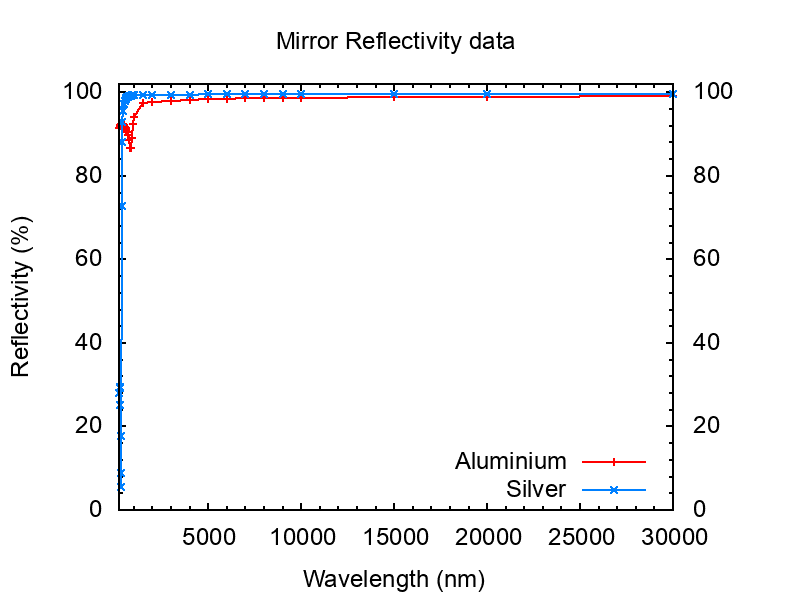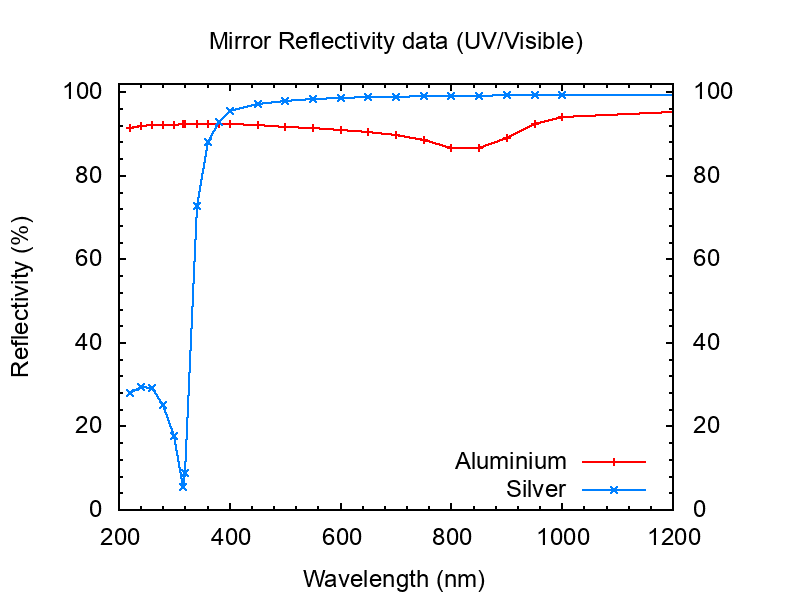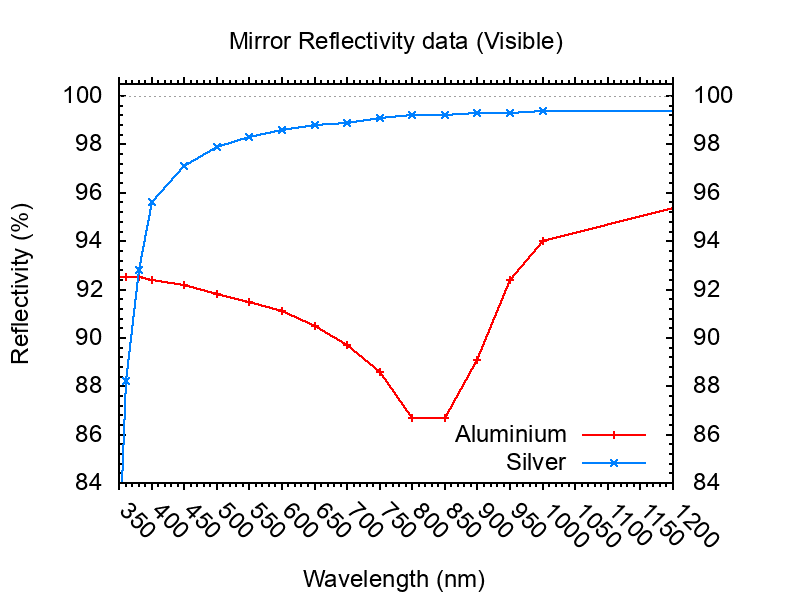As part of the day job, I needed information on how reflective a freshly coated aluminium surface (a telescope mirror) was. I had no luck finding a well sampled source of data that covered the wavelength range I was interested in (UV/Visible and into a little of the Near IR). I asked a question on Astronomy StackExchange but didn’t really get the answer want I wanted. (This is not a negative on Astronomy StackExchange, which I think is a great site and I am trying to contribute more to).
While reading the NOAO 2018 October Newsletter over lunch (sad, I know), I came across an article that covered the recoating of the 4-meter Blanco telescope (http://www.ctio.noao.edu/noao/content/Victor-Blanco-4-m-Telescope) mirror . This included a theoretical curve for bare Aluminium. So I contacted one of the authors of the article, who sent me a scan of the table from “Reflecting Telescope Optics II” by R. N. Wilson (Amazon link: https://www.amazon.com/Reflecting-Telescope-Optics-Manufacture-Astrophysics/dp/3540603565/)
These data covered 220nm to 30,000nm (0.22 to 30 microns) which was more than I needed. They also had good sampling in the visible range that I was interested. As a bonus it also included Silver and other metals in case I need to model Gemini’s mirrors or some crazy IR spacecraft… So I typed the data for Aluminum and Silver into 2 files and made some quick plots. I am also making the data files available in case they are usable by other people.
Plots



Datafiles
The files of the reflectivity data are available here:
They cover the full range of the original table data from 0.2 to 30 microns.
